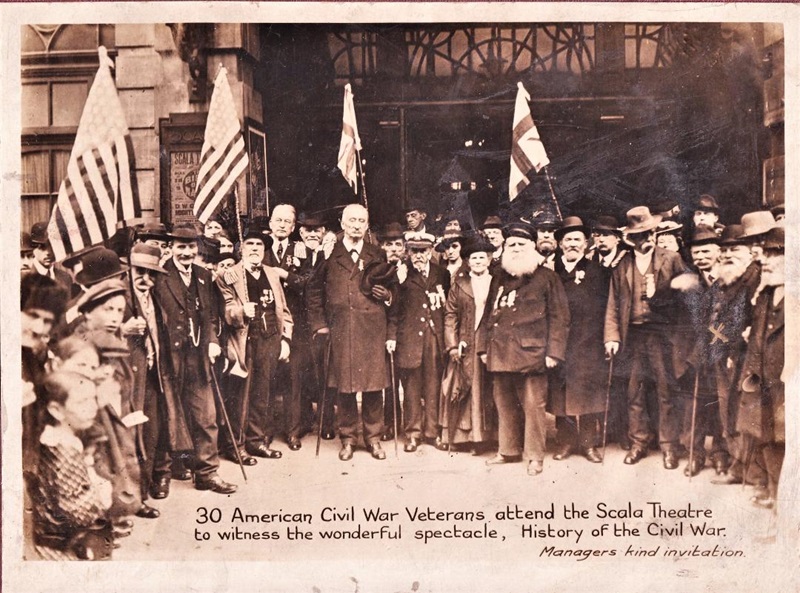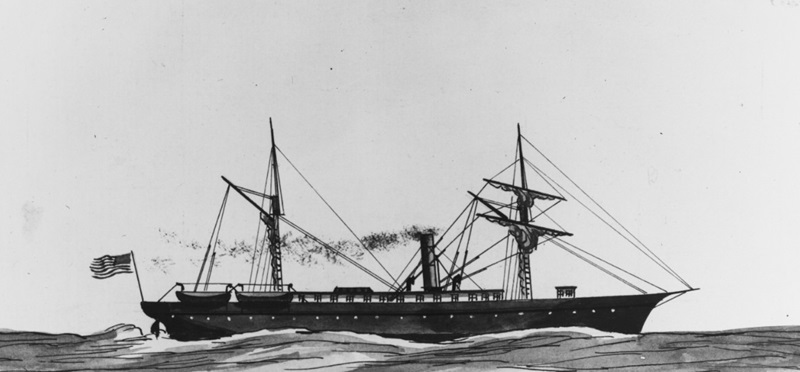Cold Cases and Campfire Tales: Monumental Project Updates
ECW welcomes back Gina Denham of the Monumental Project.
Since Darren Rawlings and I returned from the fantastic 2024 Emerging Civil War symposium, we have continued leaving no stone unturned in our “Monumental Project.” The endeavour shines light on Civil War veterans who lived and died in England after the conflict. To date, nearly 700 veterans and widows have been identified. We also founded Descendants of the London Branch of American Civil War Veterans and have 94 members on our roll.
Connecting with descendants has had incredible outcomes; rare medals, photographs and memories of forebears are all coming to light. Due to my family connections with the organisation, I wanted to give each veteran a voice and started compiling a compendium of their campfire tales. It has been a massive cold-case investigation. I’ve gathered facts, but uncovered discrepancies in accounts too. The London Branch men may have served honourably, but in their quest for pensions, some were not averse to being flexible with the truth. For example, William Lander who married Mary Ann Hartrop in London, later served with the 11th Pennsylvania Cavalry. However, when he enlisted in 1861, he used the alias name of William Jones.

A gunshot wound at Reams Station, Virginia, and his subsequent capture were a large part of his claim to secure a pension. William maintained the lie that his surname was Jones and then engaged in an incredible act of chicanery. On May 14, 1894, he remarried Mary. She was complicit in the endeavour; and in consequence, they married twice, with William using the false surname of Jones. To add further credibility to the deceit, he even enlisted support from friends, family, and officialdom to falsely state his surname was Jones. All was well until his death, then his widow had to prove William’s surname was really Lander all along.
Recently, we discovered two more rolls of surviving London Branch veterans which became a research game-changer. Our discovery has also established some members were given two roll numbers, rather than one. James H. Cleggett, of USS Morning Light, was allocated member number 11 in 1910. He was missed off their 1914 list, but on the 1920 list the omission was addressed, and he was included with a new roll number of 131. Fred Watson, Company K, 22nd New York Cavalry, became member 92, but was later given roll number 138. We have concluded such re-allocations are probably due to earlier member rolls being lost, or human error concerning record-keeping.
USS Iuka’s Henry Peter Kyrieleis also had two roll numbers. He was allocated position 35 in September 1910. However, he had already joined the roll as Henry Peterson, their 29th member! Henry is memorable not just because of service, but for some extraordinary acts of perfidy extended towards family, officialdom, and the London Branch, too.
Henry’s honourable service is irrefutable, even if his moral compass was doubtful. He claimed to be born on May 4, 1840, in Hamburg, Germany, and on May 3, 1864, he enlisted at New York as a seaman on USS Iuka. For a year he pursued blockade-runners as part of the East Gulf Blockading Squadron.

On March 31, 1865, the dream of many a mariner occurred. Henry had an opportunity for a portion of prize money when the British-flagged blockade runner Comus was seized a with load of cotton. Acting Volunteer Lieutenant William Crowninshield Rogers wrote of the vessel’s capture to Gideon Welles: “Sir, I have the honor to report to you that to-day, in the above position, the Iuka fell in with and captured the English Schooner Comus, John Harrison, master, from St. Marks, Fla., for Havana, with a cargo of 32 bales of sea-island cotton. I send the vessel and her crew (consisting of 12 persons) to Key West for adjudication.”[1]
About three weeks before Texas surrendered in June 1865, Iuka received orders to return to Boston. Henry transferred to USS Ohio and was honourably discharged on August 22. He made his way to London about 1872. Once there, Henry married widow Henrietta Briedenbach (nee Kinch) on September 22, 1872. The couple had several children and settled in Limehouse, East London. In the mid-1890s, Henry began a double-life. Letters from Henrietta in his pension file suggest in about 1893 he began a relationship with Elenor Peterson. She was about 14 years his junior. No records can be found of her birth, or death, their surname probably fabricated to satisfy the Edwardian sensibilities of census enumerators.
Henry maintained his infidelity but continued living with Henrietta. However, on December 12, 1905, in consequence of his behaviour, Henrietta was granted a legal separation at Thames Magistrate court. Their court appearance makes interesting reading:
“Henry Peter Kyrieleis, a carpenter of Edward Street Canning Town, was summoned by his wife, Henrietta Kyrieleis of Bagley street for a maintenance order. Complainant stated that her husband left her last August. He went away on the Sunday night to work in the country, and he never came back. He had not given her any money since that time. Witness asked for £1 a week. In answer to charge. Defendant said his wife was nothing but a traveling pawn ticket, and she would pawn him if she could. Complainant, ‘I had to pawn to pay my way,’ Defendant, in answer two questions, admitted knowing a Mrs. Isley of Robinson Lane, Poplar, and said he was living with her. When at work, he received 10 ½ d an hour, but that was when he got it. The woman he was living with kept him by doing washing and charing. For that, she got 1s 6d or 2s a day. The magistrate, ‘You look remarkably well on it,’ defendant also said he could not get on at all with his wife. The magistrate, ‘When you married her, you took her for better or worse.’ Defendant, ‘Yes, and it’s all worse.’ An order of separation was granted and defendant ordered to pay his wife, 9s a week with 4s costs. Complainant. ‘You can make it more than that. He earns it.’”[2]

Once the separation was granted, Henrietta was proactive in staking more claims for his assets. She wrote to the United States Consul in London giving details of her straitened circumstances, seeking to further discredit Henry: “Dear Sir I, the legal wife of Henry Peter Kyrieleis, citizen of the United States, and a naval pensioner of the same desire to make an application for a portion of his pension. He has been leading a double life for years. He has left me destitute, and since the 19th of August, 1905 I have not received a penny from him. I have just obtained a legal separation from him on the grounds of desertion and an allowance of nine shillings per week. He has been living with another woman for 12 years in the name of Peterson.”[3]
When Henry enrolled with the London Branch in 1910, he lived at 9 Desford Road, Canning Town, East London. It is from Desford Road in the 1911 census he stated his name was Henry Peterson, a German-born carpenter. Our cold-case investigation was solved once we determined he used the same address when corresponding with the pension bureau as Henry Peter Kyrieleis.
Henry died on May 23, 1914. However, in July 1914, the London Branch only reported the death of their comrade Henry Petersen. No eulogy of remembrance was afforded to Henry Kyrieleis. The evidence suggests USS Tulip’s John Davis, London Branch founder and devout missionary, had no idea members 29 and 35 were the same man.
Henry may have been deceitful to his London Branch comrades and faithless to the vows of marriage too. Nevertheless, in the Civil War he was at least loyal and true to Lincoln, and the Union in the discharge of his duties. We feel the campfire tales of men like Henry should be told, which is why our “Monumental project” continues.
Gina Denham is the author of The Spartan that Climbed Lookout Mountain and The Landsman and the Lieutenant. She is co-founder of Monuments for UK Veterans of the American Civil War Association. To find out more about their work in the United Kingdom preserving American Civil War History follow the link: https://linktr.ee/TheMonumentalProject
Endnotes:
[1] Rogers to Welles, March 31, 1865, Official Records of the Union and Confederate Navies in the War of the Rebellion, Series 1, Vol. 17, 829-830.
[2] “A Travelling Pawnticket,” London Daily News. December 18, 1905
[3] H. Kyrieleis, (1902) Certificate 35160. 1861–1934; Civil War and Later Pension Files; Records of the Department of Veterans Affairs, Record Group. National Archives Building, Washington, DC.
Great work, wish I had this info when I visited London, but now I have it for if there is a next time. “No stone unturned” – “Monumental Project” – Am I picking up a pun? Hopefully the stone monuments are unturned.